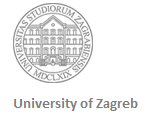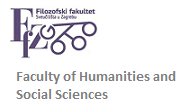Instructor: Associate professor Renata Geld, PhD
Course title: Language and cognition: from theory to application
Language: English
Number of hours per semester: 30 hours
ECTS: 4 credits
Level: graduate (open to all graduate students of English)
Course content: Students attending this course will be encouraged to discover and re-discover the nature of language and its relation to various aspects of cognition, as well as hypothesize the relevance of this relationship for various fields of science and everyday life. They will situate linguistics and language within the realm of cognitive science, and they will be invited to discuss the importance of interdisciplinary thought in education.
Special attention will be given to the construct of creativity. It will be discussed by relating the nature of mechanisms that occur in language and thought with processes that underlie various forms of human creation, ideas and „products“. Being a sophisticated and complex phenomenon, language offers numerous insights into how our mind works, i.e. how language relates to thought. The aim of this course is to introduce the fundamental notions related to human conceptual organization and discuss evidence supporting the idea that language communicates with other cognitive processes. The interrelation between language and our perceptual and conceptual knowledge opens up possibilities to investigate how human interaction with the world and our specific sensory experience affects the nature of language as well as other forms of human creation. In sum, we shall attempt to unpack creative processes by assuming that language and thought may serve as a supreme starting point for discussing creativity in various walks of life and forms of human creation.
The course structure:
Week 1 – Introduction to central notions and students’ existing knowledge and/or beliefs about them (part I): linguistics vis-à-vis cognitive science, human mind, language and general cognitive processes (attention, categorization, perspective, etc.).
Week 2 – Introduction to central notions and students’ existing knowledge and/or beliefs about them (part II): perception, mental imagery, concepts and conceptualization, experience and linguistic meaning construal, conceptual integration and creativity.
Week 3– Linguistics, cognitive science, and significance of interdisciplinarity.
Week 4 – Students’ reports (students’ field(s) of interest and future profession, motivation for joining the course, and tentative ideas about the importance of fundamental notions introduced); the way we think, the way we learn, the way we teach.
Week 5– Conceptual integration and human creativity – part I
Week 6– Conceptual integration and human creativity – part II
Week 7 – Continual assessment.
Week 8 – The nature of multimodal meaning construal.
Week 9 – Brainstorming and discussing ideas for individual micro-projects.
Week 10 – Presentation of topics for micro-projects.
Week 11 – How to test theoretical assumptions, conduct research, and apply relevant findings.
Week 12 – Consolidation and revision.
Week 13 – Students’ reports (micro-projects).
Week 14 – Students’ reports (micro-projects).
Week 15 – Students’ reports (micro-projects).
Required reading:
- Croft, W. and Wood, E. J. (2000). Construal operations in linguistics and artificial intelligence. In: Albertazzi, L. (ed.), Meaning and Cognition, A multidisciplinary approach. Amsterdam/ Philadelphia: John Benjamins.
- Fauconnier, G. and Turner, M. (2003). “Polysemy and Conceptual Blending.” In Polysemy: Flexible Patterns of Meaning in Mind and Language. Edited by Brigitte Nerlich, Vimala Herman, Zazie Todd, and David Clarke. Berlin & New York: Mouton de Gruyter. Pages 79-94. A volume in the series Trends in Linguistics.
- Fauconnier, G. and Turner, M. (2002). The Way We Think: Conceptual Blending and the Mind’s Hidden Complexities. New York: Basic Books. (selected chapters)
- Gardner, H. (1985). The Mind’s New Science: A History of the Cognitive Revolution. New York: Basic Books. (chapters 3 and 7)
- Geld, R. (2014). “Investigating meaning construal in the language of the blind: a cognitive linguistic perspective.” Suvremena lingvistika[Contemporary Linguistics]. 77. 27-59.
- Oakley, T. (2009). From Attention to Meaning : Explorations in Semiotics, Linguistics, and Rhetoric. Berlin: Verlag Peter Lang. (selected chapters)
- Turner, M. (2014). The Origin of Ideas: Blending, Creativity, and the Human Spark.New York: Oxford University Press. (selected chapters)
Recommended reading:
- Geld, R. and Stanojević, M.-M. (2018). Strateško konstruiranje značenja riječju i slikom – konceptualna motivacija u ovladavanju jezikom [Strategic Construal of Meaning Using Words and Images: Cognitive Motivation in Second Language Learning]. Zagreb: Srednja Europa. (selected chapters)
- Gibbs, W. R. (2006). Embodiment and Cognitive Science. Cambridge: Cambridge University Press. (selected chapters)
- Langacker, R. W. (1999). Grammar and Conceptualization. Berlin & New York: Mouton de Gruyter. (selected chapters)
- Parrill, F., Tobin, V., and Turner, M. (eds.) (2010). Meaning, Form, and Body. Stanford: Center for the Study of Language and Information. (selected chapters)
- Schank, R. (2011). Teaching Minds: How Cognitive Science Can Save Our Schools.New York: Teachers College Press. (selected chapters)
At the end of this course, at a general level, the students will be able to:
– find relevant literature and read it critically;
– analyze and synthesize various data;
– participate in discussions argumentatively and open-mindedly;
– appreciate and accept criticism and other people’s opinions;
– design a small-scale research project.
At a more specific level, the students will be able to:
– consolidate their prior linguistic and general knowledge with new insights about the nature of language and human conceptualization;
– consolidate their prior linguistic and general knowledge with new insights about the interrelation between language and other cognitive processes;
– apply theoretical knowledge about the nature of language and cognition to their own areas of interest;
– recognize the relevance of certain interrelations between language and cognition for various scientific disciplines and fields of life.


